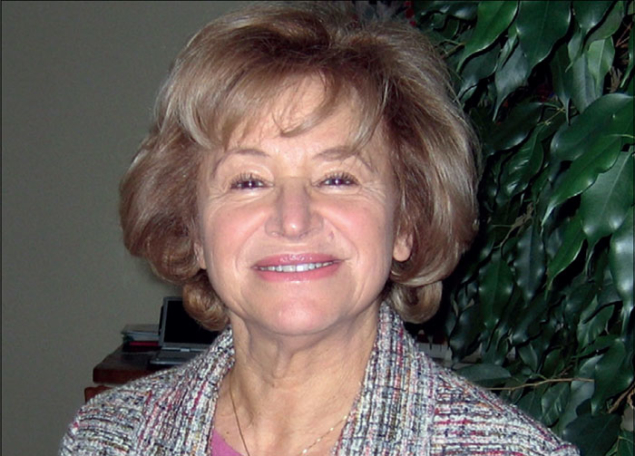Catherine Cesarsky reflects on the long-standing relationship between the two flourishing European organizations.

Image credit: ESO.
1948: The 5 m Hale telescope is inaugurated in Palomar, California. 1954: At the instigation of Jan Oort and Walter Baade, a group of renowned European astronomers meets to discuss how, by pooling the efforts of several countries, Europe could rise to the challenge and keep an important place in astronomical research; Jan Bannier, president of the CERN Council, is also present. A statement is adopted: “There is not a more urgent task for astronomers than to install powerful instruments in the southern hemisphere, and in particular a telescope … of at least 3 m.” But the scars of the Second World War are there and it will take several years of discussion before, on 5 October 1962, five governments (Belgium, France, the Federal Republic of Germany, the Netherlands and Sweden) sign the convention that creates the European Southern Observatory, ESO. The convention was drafted by Bannier, largely adapted from the CERN convention in its constitutional set-up, its financial basis and its personnel regulations (ESO and CERN: a tale of two organizations). Thus, in a sense, ESO is a younger sibling of CERN.
Soon, it was decided to establish the observatory at a site in Chile, in the Atacama Desert, chosen for its large proportion of clear nights and its excellent sky quality. A suitable piece of land was purchased at La Silla, close to La Serena. By 1969, a number of 1-m-class telescopes were in operation. Attention then focused on the construction of a 3.6 m telescope. The young organization had not yet mastered the skills necessary for such an endeavour and problems appeared on many fronts. CERN offered its help and soon the ESO Telescope Project Division moved to the CERN. A participant in the preceding discussions, CERN’s Kees Zilverschoon reported that “practically everyone … emphasized the importance of the collaboration between astronomy and high-energy physics [and] common technical developments … and the political aspect: formation of a ‘Communauté scientifique européenne’ .” This was long before the discussions on a European area of research started at the political level. With the help of some CERN engineers, the 3.6 m telescope was completed by 1976. It is still in use today, in particular for the successful search for extra-solar planets with the HARPS spectrometer.
ESO was offered new headquarters in Garching by the German government, settling there in 1980. By then, it had an excellent set of experienced engineers and in 1989 deployed a revolutionary 3.5 m telescope, the New Technology Telescope (NTT). This introduced “active optics” in which the effects of gravity, winds and temperature on image quality are counteracted by controlling the shape of the primary mirror and the position of the secondary mirror.
Even before the first light of the NTT, ESO had begun the Very Large Telescope (VLT) project. It all started in December 1977 with a lively conference at CERN on “Optical Telescopes of the Future”. Detailed studies led to the selection of an array of four telescopes of 8.2 m aperture and with active optics, with the NTT serving as a prototype for the construction of the VLT. An impressive suite of first- and second-generation instruments, most of them developed in national laboratories, have been placed at the 11 available foci, while the 12th is reserved for visitor instruments. The second ESO observatory, on Mt Paranal – with its four large VLT telescopes, four 1.8 m telescopes dedicated to interferometry and two telescopes devoted to surveys of the sky in the optical and the infrared – is now the most productive observatory in the world, allowing major advances in virtually all fields of astrophysics.
It is in the same vicinity, on Mt Armazones, that ESO plans to erect its Extremely Large Telescope (ELT), based on a novel concept that features five mirrors in sequence instead of the usual two, with a segmented primary mirror 39 m in diameter. Corrections for blurring owing to turbulence in the atmosphere, which are today made with small deformable mirrors at the level of the instruments (“adaptive optics”), will – in the ELT – be made partially by two of the five mirrors of the telescope itself.
Following an agreement signed by ESO and the US National Science Foundation in 2003, which was soon joined by the National Astronomical Observatory of Japan in collaboration with Taiwan, ALMA, an ambitious millimetre and submillimetre observatory featuring 66 antennas has been under construction for the past few years on the Chajnantor plateau in the Atacama, at an altitude of 5000 m. The inauguration will take place next March but early science, with 16 telescopes, is already bringing highly exciting results (see, for example, ALMA tastes sugar around a Sun-like star).
In 2000, ESO fostered the creation of EIROforum, a partnership of seven European research organizations with the mission of combining the resources, facilities and expertise of its members to support European science in reaching its full potential. Chaired most recently by CERN in 2011–2012, it has just been joined by a new member, the European X-ray free-electron laser project, XFEL.
ESO and CERN share a range of scientific interests and have held stimulating joint conferences in the past, the last ones also involving ESA. Today, cosmology, dark matter, dark energy, high-energy gamma rays, neutrinos, gravitational waves, general relativity and processes in the vicinity of black holes are all hot topics for both communities and would deserve a new joint conference in the near future.








